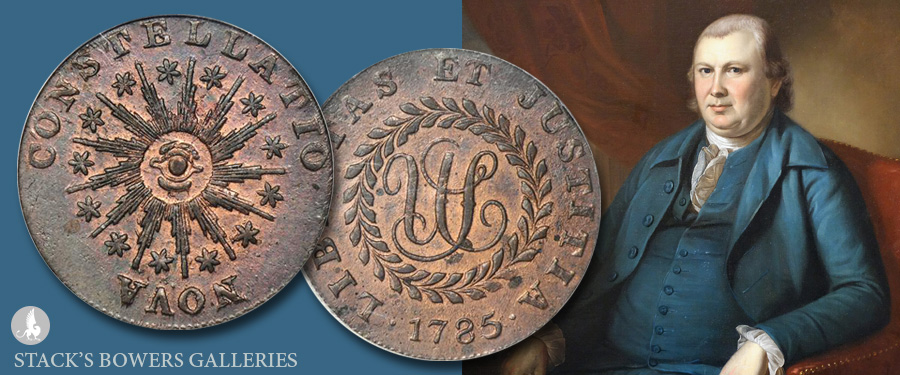
In U.S. numismatics, the name Robert Morris is most closely associated with the Nova Constellatio patterns of the 1780s. Serving as Superintendent of Finance for the Confederation, he proposed a decimalized monetary system based on a currency of 1,000 units to bring some consistency to the patchwork monetary landscape of the U.S. in the wake of the Revolution. The patterns were a product of the proposal.
Often not known, but of interest is his stint in debtors’ prison. Morris, caught up in speculative land schemes and saddled with other debts in the 1790s, declared bankruptcy in 1797 amid a significant economic downturn. He entered the Prune Street Debtors’ Apartment, next to the Walnut Street Prison, in February 1798. He remained there until released in October 1801 under the terms of the Bankruptcy Act of 1800. George Washington and other Revolution-era notables visited Morris in debtors’ prison, underscoring Morris’ influence; some historians contend that some of the political will to pass the Bankruptcy Act of 1800 was a product of Morris’ imprisonment.
Morris’ financial proposals and the Nova Constellatio patterns are not his only connections to U.S. numismatics. His portrait appears on $1,000 Legal Tender Notes in the 1860s and $10 Silver Certificates in the late 1870s, early 1880s.





